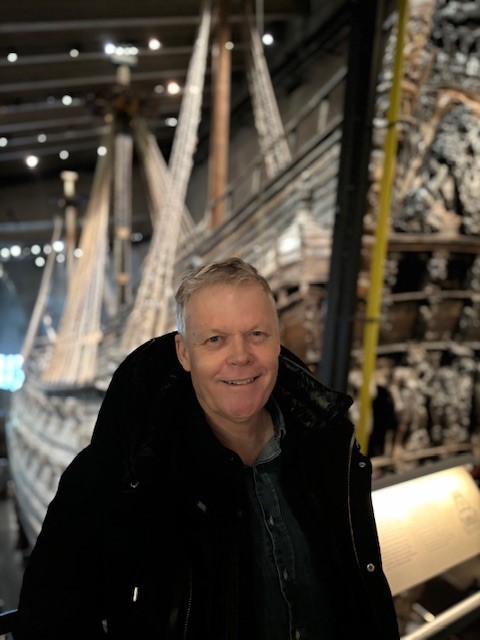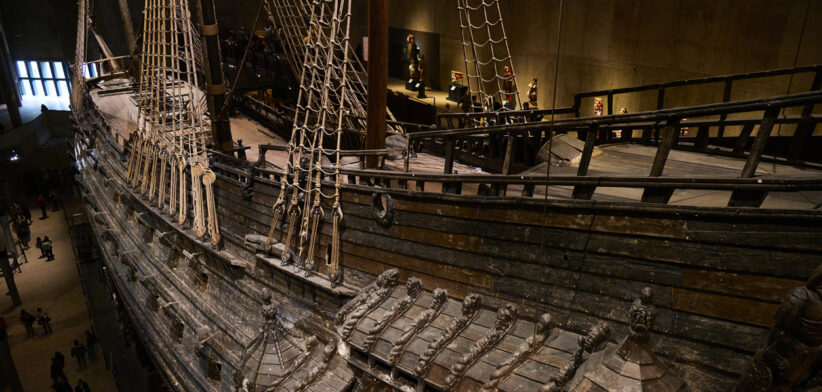By Shane Rodgers
If you travel enough, even the extraordinary can start to feel a bit bland.
Rembrandt paintings. Yeah, not bad. Ancient sculptures. Quality work, but they all look a bit alike. Museums? How many plates can you stare at?
Even so, occasionally you still have moments when something is so wildly impressive that it sits in your psyche like an unexpectedly entertaining dinner guest.
That happened to me earlier this year when I visited the Vasa Museum in the Swedish capital of Stockholm.
The city “to do” lists say this is an old ship and a whole museum has been built around it. Whoopy do, I thought. A boat in a building. Let’s go see the boat!
I was expecting something like an elongated, weather-worn tinny mounted in a shed.
And then I walked in. Wow. Seriously wow.
The Vasa ship is one of the most extraordinary things I have seen. It is no tinny. It is 69 metres long, nearly 12 metres wide and 52 metres tall (yep four storeys high!).
It is also really old, in amazing condition and it is a time capsule for an era long, long ago in a country far, far away.
There is also an intriguing story behind it. Its entire sailing history covered less than one kilometre and about 20 minutes.
The Vasa ship was built between 1626 and 1628, commissioned by King Gustavus Adolphus to be the pride of the Swedish navy. It was a heavily armed with 64 bronze cannons and designed to impress and intimidate other sea-going nations.
In the end it did not intimidate anybody. Massive crowds lined the harbour when the Vasa was launched on August 10, 1628. The ship was top heavy and poorly balanced. It quickly filled with water and then wind caused it to heel over and sink. Sadly 30 people died in the disaster.
The story did not end there. The ship lay at the bottom of Stockholm’s harbour for more than 300 years until it was rediscovered in the late 1950s.
Swedish naval engineer Anders Franzén led an unrelenting search for the vessel and eventually found evidence of the wreck just off the island of Beckholmen. The Baltic Sea’s low salinity had preserved the ship’s timber unusually well.
Divers tunnelled six steel cables under the hull, 32 metres under water, in complete darkness and freezing waters. Two massive pontoons on the surface slowly tightened the cables, lifting the ship just a meter at a time.
It took 18 lifts over 18 months to raise the ship (in 1961) and the fact that it was so big and effectively intact created a buzz all around the world.
The current museum that houses the ship was opened in 1990, in conditions designed to preserve and protect the timbers.
As well as the ship, there are galleries and films that tell the story of the Vasa’s construction and scale models of the ship in all its original colours – vivid reds, blues, and golds.
There are exhibits of recovered artifacts: sailors’ shoes, tools, coins, combs, even a half-eaten meal. In one solemn corner, you find the reconstructed faces of crew members, built using forensic science from their recovered skeletons.
The Vasa was one of many endearing features of Stockholm, an amazingly vibrant and serendipitous city.
The city has plenty of museums providing deep insights into the old world – including the Skansen with an incredible array of old buildings brought together like an eerie empty village.
But there is also a sense of pop culture and fun, with ABBA The Museum and the Junibaken, which showcases the famous world of Pippi Longstocking.
We extended our stay in Stockholm because there was something very welcoming and unexpected about it. There were also meatballs. And goat’s cheese.
Not bad. Good, in fact.










